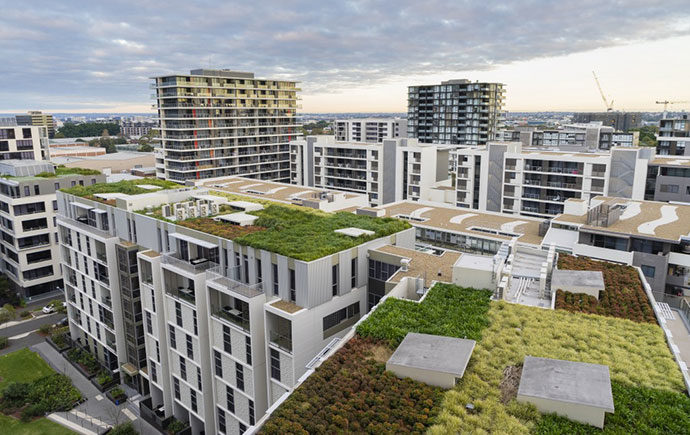



Applying principles of circularity to the built environment can help achieve global and regional sustainability goals.
New and retrofitted buildings require significant resources for construction and ongoing maintenance. As a major consumer of natural and man-made resources, buildings are especially impacted by strategies to reimagine those resources and enhance the reuse of materials throughout a building’s lifecycle.
Innovations in operations and product development positively impact on circularity in a number of ways. For example, manufacturers may develop a new insulation or roofing product from recycled content or materials previously intended for landfill, eliminating waste and enhancing building sustainability.
Covestro Transforming Carbon Dioxide into Raw Material for Flexible Foam
Scientists at Covestro have developed a breakthrough technology – a catalyst that makes it possible to harness waste CO2 and convert it into a precursor for flexible polyurethane foam. Read more about Covestro’s cardyon® carbon sequestration technology.
The chemical manufacturing industry, working with stakeholders from government, NGOs and the private sector, can make meaningful impacts in key areas, including:
Additionally, enhancing collaboration with building and product certifications can enable circularity by allowing for all stakeholders to better understand and implement principles of circularity. These collaborations can be seen in the development of more advanced circularity “credits” in building rating systems, like LEED and Green Globes.
The Ellen MacArthur Foundation points to several strategies to enhance building circularity as part of its ReSOLVE framework: Regenerate, Share, Virtualize, Optimize, Loop and Exchange.
Under the framework, the “Optimize” segment promotes enhanced circularity by “prolonging products’ use period (e.g., through repair/maintenance, design for durability and upgradability),” thus enhancing building resiliency.
Optimization is just one area in which the products of chemistry significantly contribute to enhanced building circularity. Through increased resiliency, innovative products like polycarbonate plastic help buildings to withstand major natural disasters and reduce the building’s overall lifecycle resource burdens.
Designers and architects can enhance circularity in buildings by making informed product selections that include lifecycle considerations. In this area especially, single-attribute product selection can have significant negative impacts on long-term product viability and overall building resilience.
Learn more about how high performance building materials made possible by chemistry improve building resiliency in the face of increasing natural disasters.
